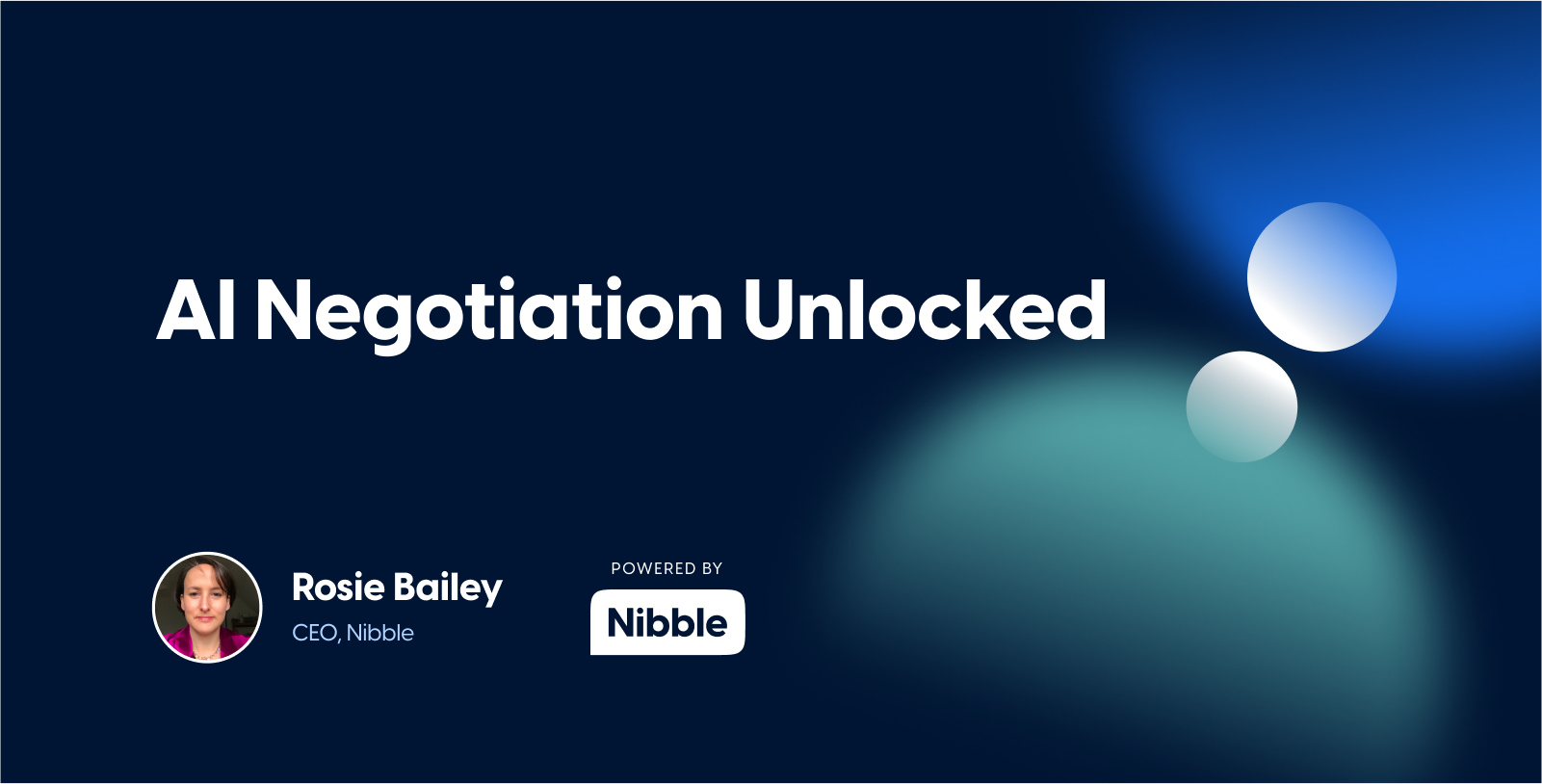
Many companies ask, “How much time will AI Negotiation save us?” It’s a fair place to start, but the time-saving is just a small part of the story.
Time savings are the by-product. The real return comes from the consistency, visibility, and decision quality that autonomous negotiation makes possible.
Moving past the stopwatch with AI Negotiation
Procurement teams are under pressure to move faster, handle more categories, and stretch resources further. Autonomous negotiation can absolutely help with that. It takes on the volume work — renewals, small agreements, low-complexity buys — and clears the decks for humans to focus on what matters most.
But if you stop measuring there, you’ll miss the real value. When negotiations move from inboxes and spreadsheets into a structured, rules-based environment, something else happens: the business starts to see procurement as a system, not a series of ad-hoc conversations. Every interaction follows the same logic. Every offer and counteroffer is recorded. Every outcome is auditable.
That shift turns “we think we’re being consistent” into “we can prove consistency.”
Consistency compounds with AI Negotiation
Autonomous negotiation creates compounding value. Once you codify your commercial logic — your targets, thresholds, and escalation rules — you’re institutionalising knowledge.
It means the next negotiation doesn’t start from scratch. It starts from evidence. It means policy isn’t interpreted differently by every category lead. It’s applied evenly. And it means suppliers can expect the same process every time they engage with you.
Consistency builds trust. It also reduces rework, exceptions, and disputes — all of which cost more time and energy than the negotiation itself.
Autonomous Negotiation: Data that actually teaches you something
Every autonomous negotiation generates structured data: how suppliers respond to different incentives, where thresholds are too tight, which rules are triggering too many escalations. That data turns into feedback — insight that helps you refine strategy instead of guessing.
This is where the ROI starts to grow on its own. The more you negotiate through an autonomous system, the smarter your parameters get. You start spotting patterns: where you’re leaving value on the table, or where suppliers respond well to certain levers. Over time, the system doesn’t just save time; it helps you make better commercial decisions across the board.
The AI Negotiation ROI story worth telling
If you’re building the business case for autonomous negotiation, it’s fine to mention time savings. They’re tangible, and they matter. But the real story sits above that.
-
It’s the reduction in inconsistency and error.
-
The clarity that comes from audit-ready data.
-
The trust built when suppliers know the process is fair and predictable.
-
And the strategic lift that happens when your best people can focus on work that genuinely needs them.
Add those up, and you’re looking at a capability that doesn’t just save time — it gives procurement back its focus.
Find out more from Nibble’s experience negotiating 100,000 times a month here.
Interested in Nibble?
